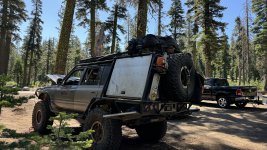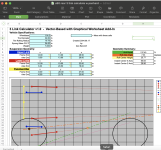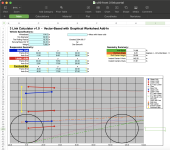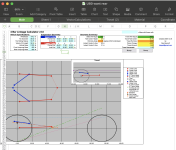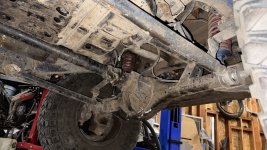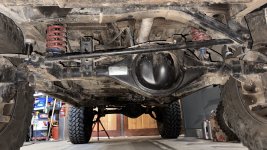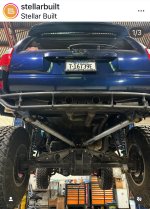Treefrog
Book Wheeler
Similar setup, but with the swaybar arm angled. M[SUB]sb[/SUB] is different because of the angle between the swaybar link and the lower link.
In this setup, changing y and leaving x the same changes the install ratio (effective ratio). When y increases, the swaybar link length increases, meaning that the sway bar arm is shorter, increasing the rate.
I left off the upper link in the diagram for simplicity.
